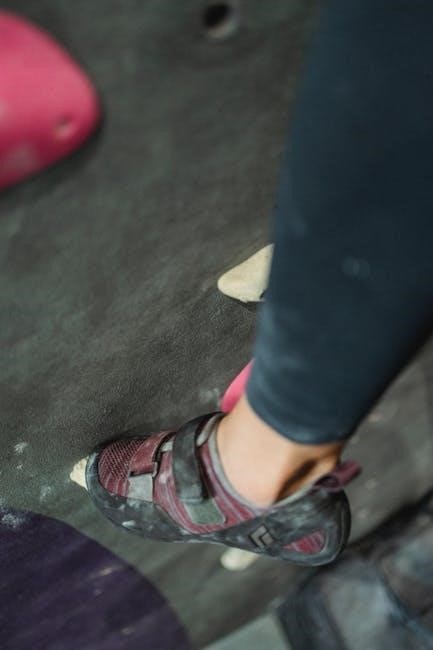
Choosing the right climbing shoe size is crucial for performance and comfort. Snug fit ensures better control, but avoid pain. Street shoe size doesn’t directly translate, as climbing shoes fit tighter. Trying different brands is essential, as sizing varies. Consider downsizing for optimal performance and precision.
Understanding the Importance of Fit in Climbing Shoes
A proper fit is the cornerstone of effective rock climbing shoes. A snug fit ensures precision, control, and comfort, allowing climbers to perform at their best. Unlike street shoes, climbing shoes are designed to fit tightly, with no dead space in the toe box or heel. This tight fit prevents foot movement during climbs, enhancing stability and precision on the rock face. A well-fitting shoe also reduces the risk of blisters and discomfort, enabling climbers to focus on their technique and endurance. However, the fit must strike a balance—it should be snug but not painfully tight. Painful shoes can hinder performance and lead to discomfort, especially on longer climbs. The right fit varies by foot shape, size, and climbing style, making it essential to try on multiple options. Ultimately, the fit directly impacts both performance and overall climbing experience, making it a critical factor in choosing the right pair.
Translating Street Shoe Size to Climbing Shoe Size

Translating street shoe size to climbing shoe size can be tricky due to differences in fit and design. Climbing shoes are typically snugger and may require downsizing from your street shoe size. For instance, a climber who wears a size 7 in street shoes might find their climbing shoes range between 5 to 7.5, depending on the brand and desired tightness. It’s important to note that climbing shoes are designed to fit closely, with no extra space in the toe box or heel, to ensure optimal performance. The exact conversion varies by brand, as different manufacturers have unique sizing standards. Therefore, relying solely on street shoe size isn’t enough; trying on climbing shoes is essential to find the perfect fit. Additionally, personal preference plays a role—some climbers prefer a tighter fit for precision, while others opt for a slightly looser fit for comfort during longer climbs.
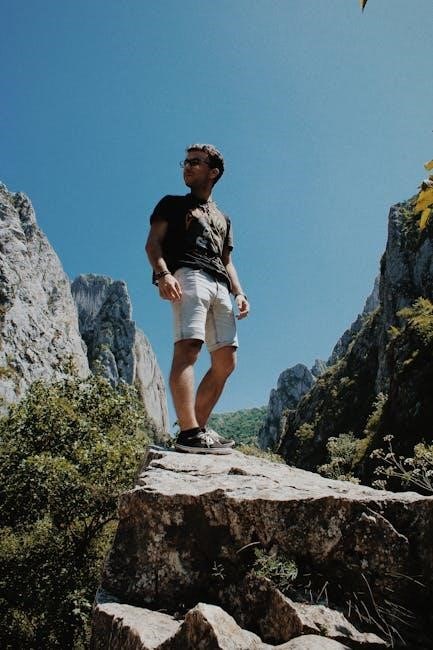
Key Factors Influencing Climbing Shoe Size
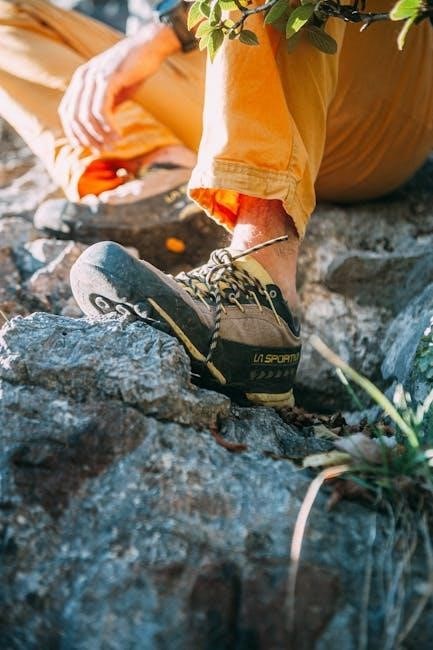
The fit of climbing shoes is influenced by several factors, including foot shape, climbing style, and personal preference. Foot shape and width play a significant role, as some shoes are designed for narrower or wider feet. Climbing discipline also matters; for example, sport climbers may prefer a tighter fit for precision, while trad climbers might opt for a slightly roomier shoe for comfort during long routes. Additionally, the material of the shoe affects sizing, as some materials stretch more than others. Intensity of use is another factor—more aggressive climbers may prefer a snugger fit for better performance. Gender differences in foot shape can also impact sizing, with men’s shoes often having a wider fit and women’s shoes being narrower. Ultimately, the right size is a balance of comfort, performance, and individual foot characteristics, making it essential to try on multiple options before deciding.
How to Try On Climbing Shoes for the Best Fit
Trying on climbing shoes is crucial for ensuring the best fit. Start by wearing the same type of socks you plan to use while climbing, as this affects how the shoes fit. Look for a snug fit without pain—your toes should be close to the end of the toebox, with no dead space. The heel should feel secure, preventing slippage during movements. Compare multiple brands, as sizing can vary significantly between manufacturers. If possible, try shoes later in the day, as feet tend to swell slightly. Pay attention to how the shoes feel when standing, bending, and applying pressure. A good fit should allow you to feel connected to the ground while remaining comfortable enough for extended use. Don’t hesitate to ask for advice from experienced climbers or staff at outdoor gear stores to help you make the best choice.
Gender Differences in Climbing Shoe Fit

Gender differences in climbing shoe fit are primarily related to foot shape and size. Women’s climbing shoes are generally designed with a narrower, more tapered toe box and a snugger heel to accommodate the typically slimmer, more delicate shape of women’s feet. Men’s shoes, on the other hand, tend to have a wider toe box and a roomier fit to suit broader, longer feet. These differences are based on average foot dimensions, but individual variation exists. For example, some women may prefer the wider fit of men’s shoes, while some men might find a unisex or women’s model more comfortable. Ultimately, the best fit depends on personal foot shape and climbing style. When trying on shoes, climbers should prioritize comfort, support, and precision regardless of gender-specific designs. Brands often offer unisex options as well, catering to diverse foot shapes and preferences. Always consider trying multiple styles to find the one that works best for you.

Why Downsizing Might Be Necessary for Performance
Downsizing climbing shoes can enhance performance by providing a snug, precise fit that maximizes control on holds. A tighter shoe reduces foot movement, improving sensitivity and power transfer, especially on smaller footholds or overhangs. Many climbers start with a size close to their street shoes but later opt for a smaller fit as they seek better performance. However, it’s crucial to avoid pain, as excessive tightness can hinder circulation and endurance. The right balance ensures comfort during longer climbs while maintaining the responsiveness needed for challenging routes. Downsizing varies by brand and model, so trying shoes on is essential to find the optimal fit. Proper sizing directly impacts climbing efficiency, making it a key consideration for climbers aiming to improve their technique and overall performance.
Brand-Specific Sizing: What You Need to Know

Brand-specific sizing plays a significant role in choosing the right climbing shoes, as each manufacturer tailors its fit to specific foot shapes and climbing styles. For instance, some brands like La Sportiva are known for a more precise, snug fit, while others, such as Five Ten, may offer a slightly roomier toe box. This variation means climbers may need different sizes across brands, even if their street shoe size remains consistent. Additionally, some brands cater to particular climbing disciplines, such as bouldering or sport climbing, which can influence sizing and fit. It’s essential to try on multiple brands to determine which one aligns best with your foot shape and climbing needs. Always refer to brand-specific size charts and consider the shoe’s material stretch when making your decision. Remember, the perfect fit is a balance of comfort and performance, and brand-specific sizing can make all the difference in your climbing experience.
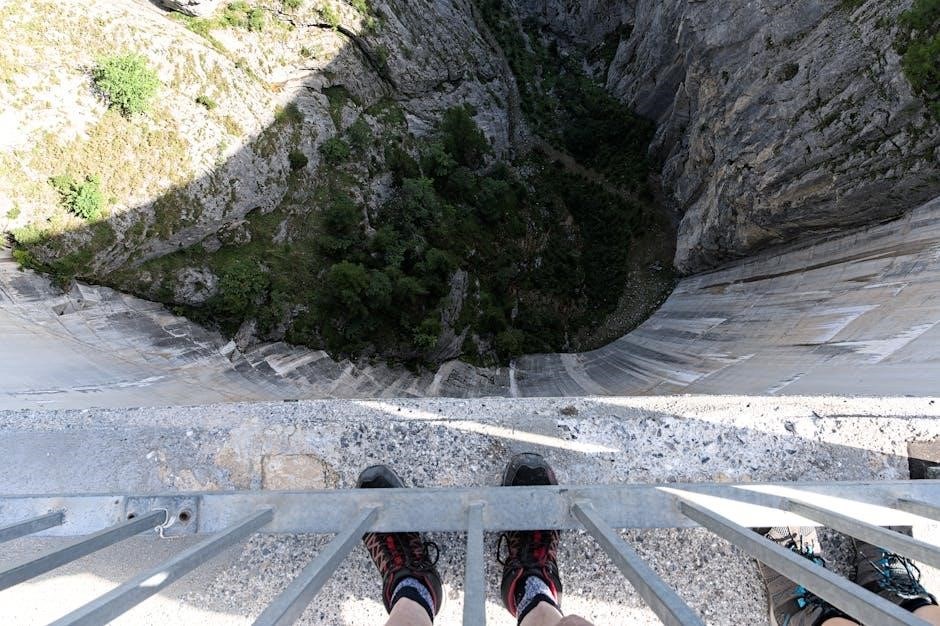
Using a Size Calculator for Accuracy
A size calculator is a valuable tool for determining your ideal climbing shoe size, helping to eliminate guesswork and improve accuracy. These calculators typically ask for your foot length and street shoe size, then compare it to brand-specific sizing charts. By inputting precise measurements, climbers can find a size that aligns with their foot dimensions. Many calculators also consider factors like shoe stretch and intended use, such as sport climbing or bouldering. While no calculator is perfect, they provide a solid starting point, especially for online shoppers. To get the most accurate results, ensure your foot measurements are up-to-date and consider the fit preferences of the brand you’re exploring. Remember, sizing can vary significantly between brands, so using a size calculator tailored to the specific brand you’re interested in will yield the best results. This approach helps climbers find a shoe that balances comfort and performance, essential for optimal climbing experiences.
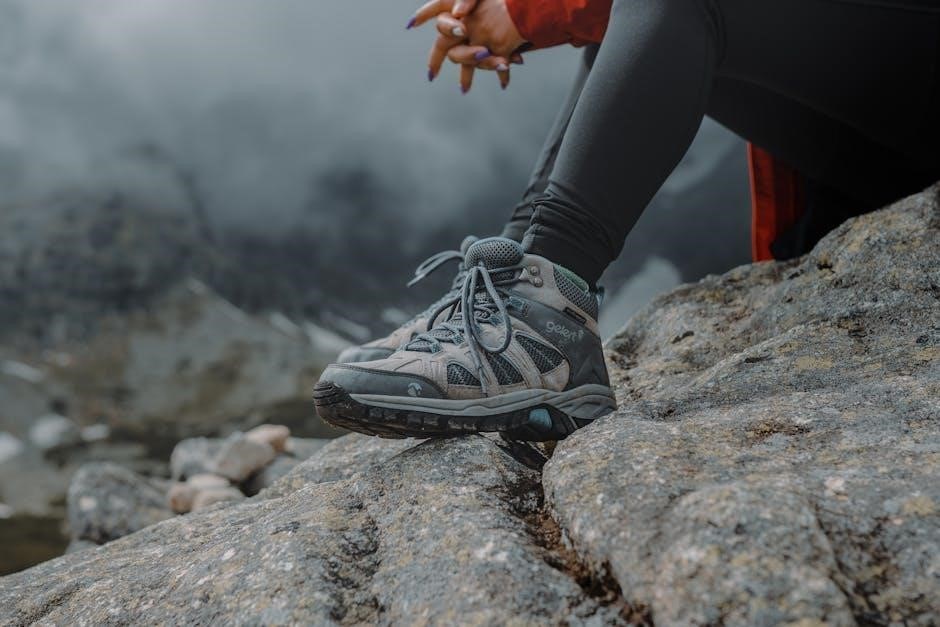
Common Mistakes to Avoid When Choosing a Size
When selecting climbing shoe size, several common mistakes can hinder optimal fit and performance. One major error is assuming street shoe size directly translates to climbing shoe size, as climbing shoes typically run smaller. Another mistake is not accounting for stretch; some materials stretch more than others, affecting long-term fit. Many climbers also neglect to try shoes on later in the day, as feet tend to swell, leading to a tighter fit. Additionally, prioritizing style over comfort or performance is a misstep, as proper fit is crucial for both. Some climbers also overlook brand-specific sizing variations, treating all brands as uniform, which can lead to poor fit. Lastly, not considering personal foot shape and toe box preferences can result in discomfort or reduced performance. Avoiding these errors ensures a more accurate and comfortable fit, enhancing overall climbing efficiency and satisfaction.
Final Tips for Finding Your Perfect Pair
When searching for your ideal climbing shoes, prioritize both fit and feel. Try shoes on later in the day, as feet tend to swell, ensuring a comfortable fit. Consider your foot shape and whether you prefer a snug or roomier toe box. Use size calculators and brand-specific charts to narrow down options. Don’t hesitate to seek advice from experienced climbers or shop staff, as their insights can be invaluable. Remember, the perfect fit balances snugness and comfort, avoiding painful pressure points. Test multiple brands, as sizing varies, and consider how much stretch you’re willing to tolerate. Finally, trust your instincts—your feet will know when the fit is right. By combining these strategies, you’ll find a pair that enhances your performance and keeps you comfortable during long climbs.



0 Comments